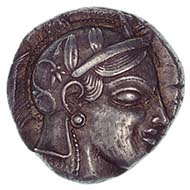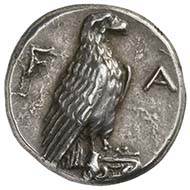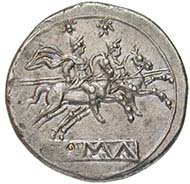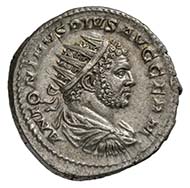Drachm, Dirham, Crown and Pound
by courtesy of Jürg Conzett, MoneyMuseum
Money and Currencies in history
Part I: From the beginnings to the Byzantine Empire
Numismatics is down to specialists only! Most scholars, most coin collectors adore their tiny little subject and do not know anything about neighboring fields. But sometimes you want to have an outline of all the most important currencies that have been used. The Zurich MoneyMuseum has issued a popular booklet on this theme a few years ago. In the meantime the revised edition is ready to be published. We will present its text in CoinsWeekly by courtesy of Dr. Jürg Conzett.
The Ancient Orient
3rd Millennium BC – First Predecessors of Money
The first very advanced civilizations of humankind developed in Mesopotamia and Egypt where rivers made the fields fertile. It is there that we discover the roots of what is known as money today. In Mesopotamia, silver was used as early as the third millennium BC to settle accounts. Certainly no “coins” were used, but crude metal which was weighed. Authorities strictly controlled the weights applied.
The man in the street, however, did not calculate in silver, but in grain, which was used as a kind of alternative money in precisely measured quantities.
Clay tablet from the period of Hammurabi of Babylon (ca. 1750 BC)
The Greek word for writing literally means „scratching“. This is closely linked with the history of writing. The first characters, the cuneiform writing, developed in Mesopotamia (today Iraq) at the end of the 4th millennium BC: Scribes took notes by pressing a slopingly cut-off style in soft clay, which left behind cuneiform marks. These marks recorded what occupied human minds; even then this meant mainly economic facts: Sales and stocks, tax rolls and credit contracts. Speaking of credit, we know from similar tablets that at the time of Hammurabi, the temple loaned silver at the annual rate of 20 % interest.
The Coin’s Birth
Between Persians and Greeks
The first coins in history were produced in Asia Minor, in the borderland between the Persian Empire and the Greek world, during the first half of the 6th century BC. They looked like little nuggets, were of standardized weight and made of electrum, an alloy of gold and silver. A symbol on the obverse identified them as a product of a certain source. We do not know whether traders, craftsmen, rulers or priests produced these first coins.
Sardis (Lydia), stater, gold (8.08 g), after 550 BC
The staters, which show the forepart of a lion fighting against a bull on the obverse, are traditionally linked to the Lydian king Croesus who reigned from approximately 560 until 547. Even today, we use his name to designate an exceptionally rich man. In fact, this last Lydian king disposed of vast reserves of precious metals, above all the gold from river Pactolos. The tributes from rich trading towns at the coast of Asia Minor, controlled by Croesus, also contributed to his wealth.
Therefore, it is quite possible that he implemented a coin reform around 560 BC, which replaced the old electrum coins by a bimetallic system of nominals. For the first time in history, the relation between coins made of gold and coins made of silver was determined at a fixed rate. The new currency was based on a gold stater of about 8 g, which corresponded to 10 silver staters. The stater was struck in various fractions in order to make it easier to pay relatively “small” amounts – but even the very small fractions, the 1/48 staters with a weight of 0.16 g each, were still precious. The new coin was so popular that the Persians maintained it after the conquest of the Lydian empire in 547. It is therefore not absolutely certain whether our coin was struck under Croesus or under Persian rule. But it is a fact that it was made for the trade with Greek cities.
From Asia Minor, the coin started its triumphal march as a bartering object to all Greek cities around the Mediterranean Sea. Within only two generations, it dominated all market places where Greek traders offered their goods. The reasons for this development were complex. It may have been connected with the political changes occurring approximately at that time: Tribes which had formerly been commanded by an aristocracy transformed into urban communities where citizens owed their social status not solely to their birth, but also to their wealth. At the same time, the intra-urban and the international trade both grew. Not least, the supply of the markets with change encouraged the division of labors. The new medium “coin” offered a lot of advantages to the up-coming cities; nevertheless, there have been communities which managed to get by without their own coins for centuries.
Sardis (Lydia), 1/3 stater, silver (3.45 g), after the middle of the 6th cent. BC
Even if the golden staters may look really impressive, silver became the major minting metal in Greece. Cities and tribes who possessed their own silver mines could consider themselves lucky. Athens’s wealth and its military power have their origin – among others – in the silver mines at the neighboring Laurion.
Those who didn’t mine any or not enough silver had to buy the raw material for their coins on the free marked. They had to melt down other cities’ coins in order to restrike them with their own standard and coin type.
Drachm
Athens’s Hegemony over Greece
The Greco-Persian wars (500–448 BC) laid the foundation of Athens’s position as the protector of the Greek cities against the Persians. Athens defended its allies by means of its powerful fleet and thus made those allies either provide ships for the fight or pay tribute to the League’s treasury.
At the beginning, the Delian League founded in 477 was an alliance of equal members, but Athens soon developed into an aggressive ruler due to its superior instruments of power. In the end, Athens spent the tributes of its allies at its own discretion.
Athens (Greece), tetradrachm, silver (17.2 g), ca. 455 BC
Between 510 and 500, the Athenians introduced the coin type that was to become famous in the whole world: the owl, sacred animal of the divine protector of the city of Athens, Athena. They called their new coin drachm and subdivided it into six oboloi. This system seems to be rooted in the past when metal spits were used as bartering objects in Greece. Obolos is the Greek word for spit and six spits are a handful, in Greek words a drachm.
Early owls are very rare; the ones having been struck during the 5th cent. BC, however, are very common. This is due to the fact that Athens used the silver of the Delian League’s treasury to strike coins and to pay for the improvement of Athens’s infrastructure. During the age of Pericles, the allies’ funds did not only finance Athenian democracy, but also the buildings of the famous acropolis. The Parthenon and the Propylaea are said to have swallowed up 1.000 talents, i.e. 6 million drachms. Phidias’ famous statue of Athena cost between 600 and 1.000 talents. If somebody could not attend work because he had to carry out a democratic function, he was paid off. A judge was given two obols a day. In other words, he would have had to attend court for twelve days in order to earn a tetradrachm like ours.
The drachm of Athens became the most popular trading coin of ancient times – its weight standard spread over all Mediterranean coasts. Various authorities imitated it before the drachm of Alexander the Great displaced the Athenian drachm.
Syracuse (Sicily), decadrachm, silver (43.3 g), ca. 405 BC
Coins were not only bartering objects in ancient Greece. The city fathers hired the best die engravers of their times and were proud of the works of art they created. The coins of Syracuse, the most important trading center of Sicily, are a good example for this.
For more than a century, the Syracusan tetradrachms’ motive remained the same. Since 510, the reverses had presented Arethusa, a water nymph who furnished the important fortress Ortygia, which was located on an island surrounded by brine, with drinking water. The inhabitants of Syracuse saw a sign of divine grace in this present of Mother Nature, and they thanked the water nymph with their worship and the fact that Arethusa was chosen as a coin type. The coins, however, did not always depict the same young woman, unchanged. Arethusa was shown with differing hairstyles and physiognomies.
Our decadrachm is an extremely nice example. Its die was made by an artist named Kimon who was granted the honor to carve his name into the die. The letters Kimon are written on the body of the dolphin below the neck of Arethusa, and the first letter of the die engraver’s name K can be read on the ribbon in Arethusa’s hair directly above her brow. Signatures like this one are an exception. During Antiquity and the Middle Ages, the artists designing the coins remained anonymous.
The Eleans for Olympia (Peloponnesus), stater, silver (12.2 g), ca. 350 BC
The letters FA that can be found on the reverse of this coin are the abbreviation of Faleion, which means coin of the Eleans. The Eleans were the tribe controlling the sanctuary of Olympia. Every four years, they organized the great sacrifices in honor of Zeus, of which the Olympic games formed part. These famous games attracted multitudes of Greeks from all parts of the Mediterranean region. The guests had to be furnished with a standardized currency in order to facilitate the trade between the visitors. This is the reason why the Eleans had struck coins on the occasion of the Olympic games since the second quarter of the fifth century. Of course, these coins were no commemorative coins. The idea of a commemorative coin developed in Modern Times.
Alexander’s Empire
When Alexander started his great campaign against the Persians, his royal treasury consisted of 70 talents, whereas he had debts of 200 talents. A few years later, his financial standing had changed completely. The conquest of Susa won him 50.000 talents of silver, the capture of Persepolis 120.000, and the fall of Ekbatana 180.000. Therewith Alexander disposed of more silver than any Greek before him. He did not bury his treasures in the treasury as the Persians had done before, but initiated the most extensive coin emission of the Greek period.
Philip II., king of the Macedonians 359-336 BC, stater, gold (8.6 g)
Under the reign of Alexander’s father Philip II, gold came back in widespread use as a metal for coins. Staters of gold circulated side by side with the omnipresent tetradrachms of silver. The conquest of the gold mines of the Pangaion Mountains in Northern Greece had made the emission of gold coins possible on a large scale.
Philip chose a propagandistic picture for his coins. On the obverse, we find Apollo, in whose name Philip fought against the Phocians. The reverse depicts the biga with which Philip won the Olympic games. The greatest of all Macedonian kings paid not only his mercenaries with those coins, but also the politicians who acted on his behalf in Greece. His son Alexander continued to strike this coin type. And this very piece with the delicate face of Apollo makes some archeologists think of a portrait of Alexander.
Alexander III, king of the Macedonians 336-323 BC, tetradrachm, silver (17.1 g), Memphis (Egypt)
Millions of tetradrachms featuring the head of Heracles on the obverse and the figure of Zeus on the reverse were struck under the reign of Alexander. Nevertheless, the tetradrachms issued in Alexander’s lifetime are only marginal compared to the mass emission, which started after Alexander’s death. Since traders in the whole then known world had got used to these coins, every important trading center struck tetradrachms of the Alexander type, some even until the first century BC.
Little differences within the coin type indicate when and where the coins were produced. The mintmark – in this case a rose for Memphis – points to the minting city. The later the coin was struck, the more the face of Heracles resembles the portrait of Alexander. There is a good reason for that: Alexander himself did not depict his own face on coins. This changed, however, under his successors. The human portrait became connected with the coin’s obverse in such a degree that later die engravers couldn’t imagine Alexander not to have his face placed on the coins. Therefore, they assimilated the features of Heracles to the known features of Alexander.
Denarius
Rome’s Rise to Power
Rome, in the first instance an unimportant village in Central Italy, located in the borderland of different cultures, developed into the most important power in Italy, by conquering the world as it was known then. Sicily, Spain, Asia Minor, Gallia – Rome soon disposed of the income from rich trading cities and even richer metal deposits. The Roman currency spread together with Roman rule. The denarius had been created shortly before 211 BC, a time of huge threat, during the war against Hannibal. It was produced until the 3rd century AD.
Roman Republic, denarius, silver (4.5 g), 211 BC
Between 213 and 211, the Romans made a radical currency cut. This happened at the climax and turning point of the Second Punic War against Hannibal, shortly after the conquest of Syracuse. They introduced the denarius, which was a silver coin of ca. 4.5 g valued at 10 asses of bronze (as indicated by the letter X for 10, which can be seen behind the female head). This woman with the helmet is traditionally regarded as Roma, the personification of the Roman city-state. The reverse presents the Gemini Castor and Pollux, who were considered a kind of divine rescuer.
The denarius replaced a highly complex system of Roman money. Since the end of the fourth century, the city fathers had made different coins for different purposes. There were silver coins of Greek standard for the trade with the Greek cities in Southern Italy, and there were bronze bars for the Italian communities in Central Italy. Around 280/275, Rome started to produce Aes Grave, heavy bronze coins. All these forms of money circulated side by side, posing more or less problems, until the currency reform of the Second Punic War standardized the money system for centuries.
The denarius became the most successful currency of all times. Its name became the paragon of coin and survives in many modern coin names.
C. Julius Caesar, denarius, silver (3.7 g), March 44 BC
In Rome, the title of “Caesar Dictator Perpetuo”, i.e. “Caesar autocrat for live”, was a novelty. The city-state’s constitution only allowed for the function of a dictator, an official who was elected in times of war and possessed the absolute authority in the course of a fixed period. The fact that this office was bestowed without a limit of time was an incredible scandal in Roman eyes. Another scandal was the fact that Caesar had his portrait placed on the obverse of his coins. So far, only Greek kings – whom the Romans thought to be tyrants – had done so. The face of a Roman still alive on a coin’s obverse must have been a beacon to the upper class. It was interpreted as the end of democracy. Only a few days after these coins were struck, Brutus and his friends murdered hated Caesar.
Sure enough, the Roman people had a different opinion of this man who had brought discipline and peace to a society that had been mixed up profoundly by civil wars. They worshipped Caesar and supported his heir Octavian, who was to found the emperors’ rule over the Roman Empire.
Caracalla, Roman emperor 198-217, antoninianus (= double denarius), silver (5.1 g)
The defense of the Roman frontiers against the beginning Barbarian Invasions asked too much of the empire’s resources. As long as new provinces became attached to Rome’s territory and as long as new societies had to be supplied with Roman money, the fact that the face value of the denarius was much higher than its intrinsic value had not mattered yet. This changed, however, during the crises of the third century. The Barracks emperors procured the funds for the immense cost of their soldiers by reducing the silver content of the denarius drastically. Caracalla participated in this development by producing a double denarius, which had only 1.5 times the weight of a denarius, thus further heating up inflation. It was not before Diocletian’s currency reform that somebody tried to fight against the ongoing depreciation of currency. The great reformer failed dismally in this case.
Solidus
Rome’s Successor – The Byzantine Empire
While the Western Roman Empire perished in the turmoil of the Migration Period, Roman administration, Roman economy, and the Roman army survived in the Eastern part of the Empire. This part is called the Byzantine Empire by today’s historians, after Byzantion, the name of the Greek polis, where the new capital city of Constantinople was founded. Even though the Byzantine emperor had to tolerate the loss of important territories in the Near East, in Africa and the Balkans, the Byzantine Empire existed for nearly another 1.000 years after the conquest of Rome. In 1453 the Turks captured it and made it their own capital.
Constantine I, Roman emperor 307-337, solidus, gold (4.45 g), 314, Trier
In 324, the Roman emperor Constantine founded a city, which bore his name, Constantinople. This metropolis located in the borderland between East and West was to replace Rome as capital of the Roman Empire.
The foundation of the new city coincided with the introduction of the solidus, a new gold coin of the Roman Empire, which was struck in Trier from the year 309 onward, in all other mints since 324. The solidus became – as its name promised – a stable coin: it was struck for more than 1.000 years almost and influenced the surrounding currency systems deeply. It was imitated, for instance, by the tribes of the Migration Period, and the Merowingians based their own coins on the Byzantine tremissis, the third of the solidus.
Until the first Western gold coins were struck in Italy, the solidus was the most important gold coin circulating in the Occident.
Justinian II, Byzantine emperor 685-695 and 705-711, solidus, gold (4.4 g), Constantinople, after 705
Since 44 BC, the heads of Roman and Byzantine emperors had occupied the coins’ obverses. Justinian II was the first to break this convention. He tried to strengthen his realm’s internal cohesion against external enemies by celebrating his empire as a divine institution. This policy was reflected in his coins: The emperor’s bust was transposed from the coins’ obverse to the reverse. The obverse was reserved for the image of Christ.
But this change was soon withdrawn when, in 726, the Iconoclasm began. During this period, clergymen who had been influenced by the ideas of Islam tried to end the Byzantine adoration of icons. For more than a century, the reproduction of the effigy of Christ was controversial. In 843, the iconodules, i.e. those who worshipped icons, politically got the upper hand. A council approved the icons and their adoration as a legal form of Christian faith.
Drachm, Dirham, Crown and Pound – Part II: Middle Ages
Part III concludes this series.








































